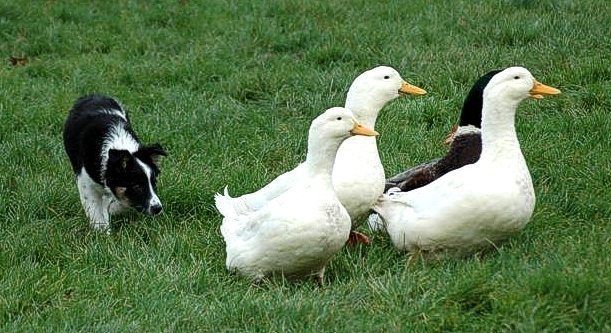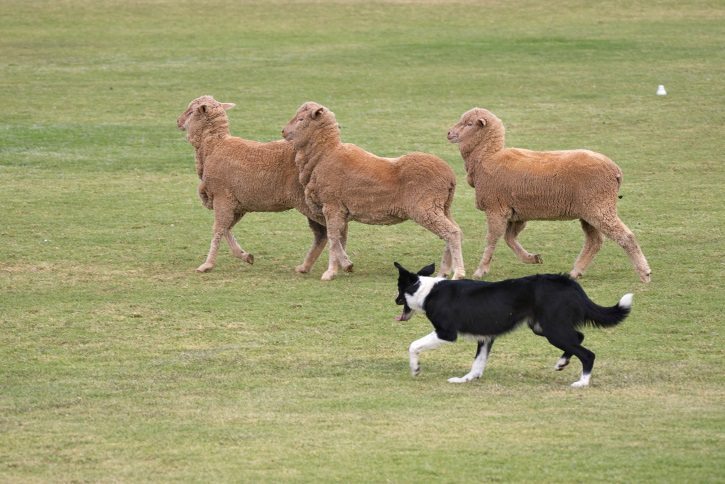
About Herding Trials
Herding Trials are competitions where the dog moves animal/s around a field by following a person’s queues and directions. In a non-competitive venue the trails focus on your dog’s overall herding instinct and training capacity in this field. In the competitive venue the program’s purpose is to develop the herding skills in the herding breeds and to demonstrate that ability for which those dogs were originally bred. In competition, the herding scenarios are artificially created from situations of pastoral and farm life. The three categories of livestock used in herding trials are cattle, duck, and sheep. The dog’s must not attack or harm the animals. The tests that are standardized to measure the ability of the breeds. There are many breeds classified as herding breeds. They include Australian Cattle Dogs, Border Collies, Collies, German Shepherds, Old English Sheepdogs, Corgis and Samoyeds. The complete list may be found on the AKC website, along with official rules for competition. There are breed specific organizations that hold herding trials and also herding organizations that compete, as well. The resources for information available on-line to enter this field of training and competition are many.
Testing
The beginning tests in herding trials will judge a dog’s ability to control and move livestock. This is done by driving and fetching. To train your puppy to perform this behavior, you will start by training the dog to chase a toy and stop chasing on command. The puppy must learn to sit and stay while you throw the toy again. It is recommended to start this training in an area where livestock is present to get your puppy used to working around it. As your puppy matures, you will add the normal

herding commands such as “way to me” which means the dog moves counter clockwise and back towards you, or “get out” which would instruct the dog to move away from the herd. All training near a herd should begin with your dog on a leash while you move alongside the herd issuing commands. Allowing your dog to run freely until it becomes familiar with the livestock might result in injury to your pet or aggression towards the livestock. As your dog gets acclimated to the livestock you can remove the leash allowing the dog to perform on its own. There is no equipment to purchase for training your dog in herding. It requires only your time and dedication—and it will require a substantial amount of time to train your dog for this activity. Take your time. Calm reassurance should be used when training your dog to herd. Work on a single call until your dog has it down pat. If your dog tires or becomes inattentive, cut the lesson short. Make it fun!
Safety
There are no adverse health risks involved in herding trials. All activity performed by your dog comes naturally to the herding breeds. The activity provides your dog with exercise and satisfies its desire to work, which is inherent in a herding breed. Proper training will ensure your dog does not have an unfortunate collision with the livestock it’s herding.









